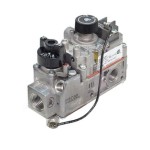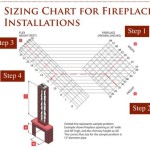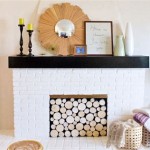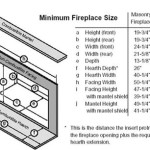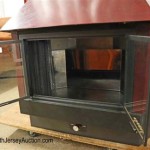How To Add A Fireplace to Your Home
Adding a fireplace to a home can significantly enhance its aesthetic appeal, provide supplemental heating, and create a cozy atmosphere. However, the process involves careful planning, consideration of building codes, and potentially engaging professional expertise. This article details the necessary steps to introduce a fireplace into a residential space, exploring various options and outlining the key factors that dictate the success of such a project.
The initial stage requires a thorough assessment of the home's structural integrity and the available space. Considerations should include the type of fireplace desired, the existing heating system, the home's layout, and any potential zoning restrictions. Careful planning at this stage will prevent costly alterations and ensure the fireplace integrates seamlessly with the existing structure and aesthetic.
Choosing the Right Type of Fireplace
The selection of a fireplace is paramount, as it directly impacts the installation process, fuel source, and overall aesthetic. Fireplaces are available in various types, each with distinct advantages and disadvantages:
Wood-Burning Fireplaces: These traditional fireplaces offer an authentic ambiance and the classic crackling sound. However, they require a dedicated chimney, a readily available wood supply, and diligent maintenance to ensure safe operation. Building codes often regulate wood-burning fireplaces due to environmental concerns and safety hazards, such as creosote buildup and the risk of chimney fires. Proper ventilation is crucial, and professional installation is strongly recommended.
Gas Fireplaces: Gas fireplaces offer convenience and ease of use. They can be fueled by natural gas or propane, and many models feature remote controls for adjusting the flame and heat output. Venting options include direct vent, vent-free, and B-vent systems, each requiring specific installation procedures and safety precautions. A professional gas line installation is mandatory, and regular maintenance by a qualified technician is essential to prevent gas leaks.
Electric Fireplaces: Electric fireplaces are the simplest option to install, as they do not require venting or fuel lines. They operate by simulating flames using LEDs and a heating element. Electric fireplaces are typically less expensive than gas or wood-burning models and can be easily moved from room to room. While they provide supplemental heat, their heating capacity is generally lower than that of gas or wood-burning fireplaces. They offer a purely aesthetic contribution in many circumstances.
Ethanol Fireplaces: These fireplaces burn liquid ethanol fuel, producing a clean-burning flame without the need for venting. They are available in various designs, including freestanding, wall-mounted, and tabletop models. Ethanol fireplaces are relatively easy to install and maintain, but they produce less heat than other types of fireplaces and require a readily available supply of ethanol fuel. They should be used with caution and in well-ventilated spaces.
The selection process should involve a careful evaluation of the home’s existing infrastructure, the homeowner’s budget, and the desired level of maintenance. Consultation with a qualified contractor is highly recommended to determine the most suitable fireplace type for a specific residence.
Assessing the Structural and Venting Requirements
Before commencing any installation, a thorough assessment of the home's structural and venting requirements is essential. This assessment should be performed by a qualified professional, such as a structural engineer or a licensed contractor.
Structural Integrity: The weight of the fireplace and chimney must be supported by the home's foundation and framing. If the existing structure is not adequate, reinforcement may be necessary. This can involve adding support beams, reinforcing the floor, or constructing a new foundation. Failure to address structural concerns can result in structural damage, safety hazards, and costly repairs.
Venting Requirements: The type of fireplace selected dictates the venting requirements. Wood-burning and gas fireplaces require a dedicated chimney or venting system to safely exhaust combustion gases. The chimney must be properly sized and constructed to ensure adequate draft and prevent backdrafting. Gas fireplaces offer several venting options, including direct vent, which draws combustion air from outside and exhausts gases directly through a sealed vent, and vent-free, which recirculates the air within the room (though these are subject to local codes and may be prohibited in some areas). Electric fireplaces do not require venting.
Building Codes and Permits: Prior to construction, it is crucial to obtain the necessary building permits from the local authorities. Building codes regulate the installation of fireplaces to ensure safety and compliance with environmental regulations. Compliance with building codes involves adhering to specific requirements for chimney height, clearances from combustible materials, and fire safety measures. Failure to obtain permits or comply with building codes can result in fines, delays, and the potential for unsafe conditions.
A professional assessment will identify potential structural and venting challenges, ensuring that the fireplace is installed safely and in compliance with all applicable regulations.
The Installation Process: A Step-by-Step Guide
The installation process varies depending on the type of fireplace selected and the specific requirements of the home. However, the following steps provide a general guideline for installing a fireplace:
Preparation: Clear the area around the installation site and protect the surrounding surfaces. Gather all necessary tools and materials, including the fireplace unit, venting components, fuel lines (if applicable), and safety equipment.
Framing and Support: Construct the necessary framing to support the fireplace and chimney. Ensure that the framing is level and plumb, and that it meets the structural requirements specified by the manufacturer and local building codes.
Venting Installation: Install the chimney or venting system according to the manufacturer's instructions and local building codes. Ensure that the venting components are properly sealed and secured to prevent leaks. For gas fireplaces, a qualified technician must install the gas line and connect it to the fireplace unit.
Fireplace Installation: Position the fireplace unit within the framing, ensuring that it is level and properly aligned. Connect the venting system to the fireplace unit, and secure the unit to the framing. For gas fireplaces, the technician must connect the gas line to the unit and test for leaks.
Finishing: Install the firebox surround, mantel, and other decorative elements. Ensure that all materials are non-combustible and that they meet the required clearances from the firebox. Seal any gaps or cracks with fire-resistant caulk.
Testing and Inspection: Following installation, thoroughly test the fireplace to ensure that it operates correctly and safely. Check for leaks, proper venting, and adequate heat output. Schedule an inspection with the local building inspector to ensure compliance with building codes.
It is highly recommended to entrust the installation process to a qualified professional. Incorrect installation can result in safety hazards, structural damage, and costly repairs.
Beyond the physical installation, consideration must be given to the surrounding environment. This includes heat-resistant flooring materials, the placement of furniture and other flammable objects, and the implementation of safety features such as smoke detectors and carbon monoxide detectors. A well-planned installation will not only enhance the home's value but also ensure the safety and well-being of its occupants.
In summary, adding a fireplace to a home is a complex project that requires careful planning, attention to detail, and adherence to building codes. By selecting the appropriate type of fireplace, assessing the structural and venting requirements, and following the proper installation procedures, homeowners can enjoy the warmth and ambiance of a fireplace safely and efficiently.

Your Home Doesn T Have A Fireplace And You Want To Add One

4 Things Every Homeowner Should Know Before Installing A Fireplace

Things To Consider If You Want Add A Fireplace During Your Home Remodeling

The Best Place In Your Home To Install A Fireplace

Top 5 Reasons To Install A Fireplace In Your Home Stone Solutions Maine

How To Build A Fireplace Planning Guide Bob Vila

Moving Hot Air How To Heat Your House Using Fireplace

Sprucing Up Your Home S Living Room With Fireplace By Expert
No Fireplace In Your Home Add One Heatilator

How To Install A Fireplace Homeserve Usa
Related Posts


